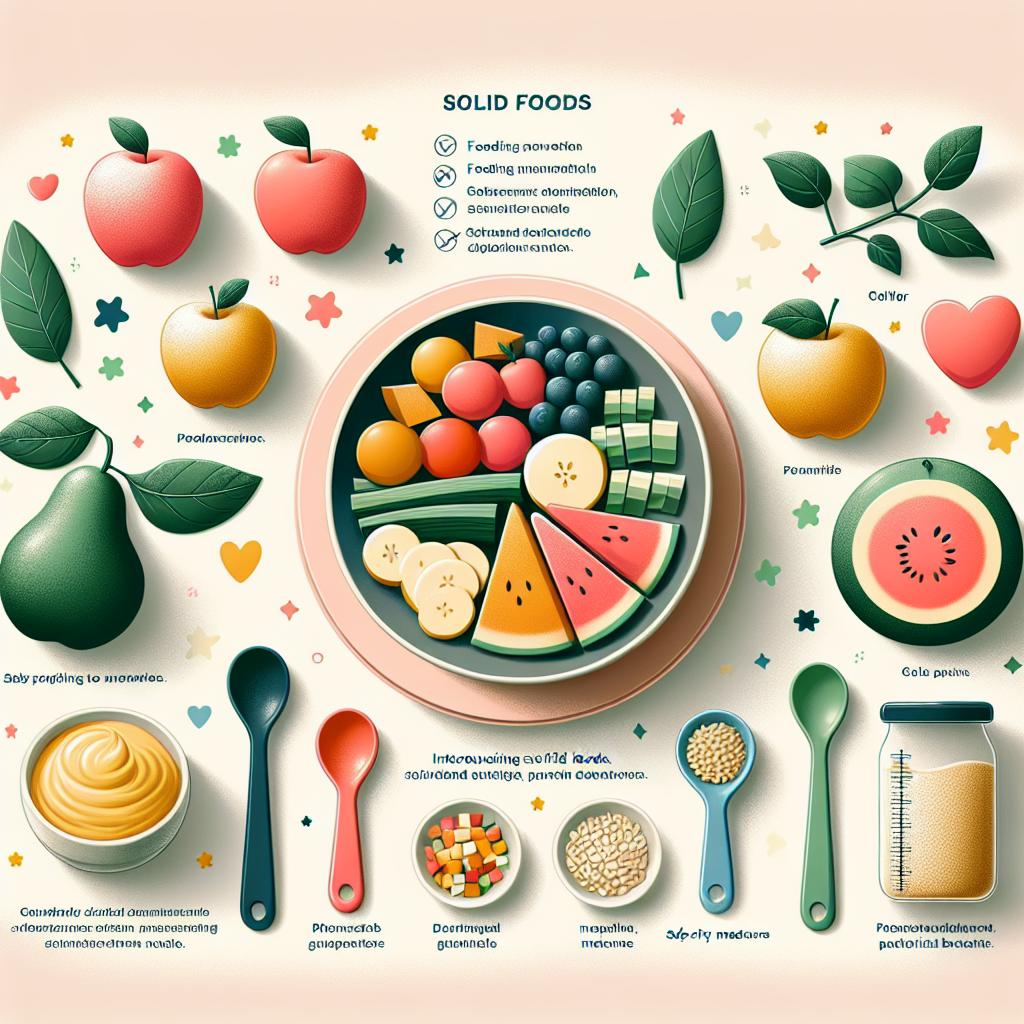When To Start Introducing Solid Foods
The journey of introducing solid foods to your baby is both exciting and nerve-wracking. There is often confusion regarding when to start and how to do it safely. According to the World Health Organization, it is advisable to begin introducing solids at around six months of age.
However, do note that every child is unique, and readiness can vary. When your baby starts showing an interest in your food or begins reaching for your plate – these could be signs that they are ready.
Baby Feeding Tips for First-time Parents
Introducing solid foods to your baby doesn’t have to be an intimidating process. Here are some baby feeding tips to get you started:
- Start small: Begin with small quantities. Use a teaspoon to feed and gradually increase the quantity as your baby gets used to it.
- Go slow: Introduce one food at a time. This way, it’s easier to identify any potential food allergies or intolerances, as discussed in detail here.
- Puree, Mash, or Soft Chunks: Initially, you can puree the food. As your baby grows older, you can move to mashed food and then soft chunks.
- Maintain Hygiene: Babies have a developing immune system, so make sure all utensils are clean, and the food is cooked properly.
Safe Eating Practices
Safe eating practices are essential while introducing solid foods to minimise the risk of choking. At this stage, babies should always be kept upright while feeding. Plus, avoid feeding them hard pieces of food. Being vigilant and keeping these eating tips in mind throughout the feeding process will ensure your baby’s safety.
The Role of Nutrition in Babies’ Diet
As your baby transitions from breast milk or formula to solids, nutrition plays a pivotal role. Nutrient-dense foods enrich your baby’s diet and foster growth and development. Foods like mashed banana, avocado, well-cooked eggs and chicken, and pureed vegetables are rich in necessary nutrients.
The Academy of Nutrition and Dietetics suggests that these first foods should not just be about filling your baby’s stomach but also introducing different food textures and tastes.
Home cooked meals are often nutritious and less likely to contain harmful additives. Check out these homemade baby food recipes to get some ideas on preparing healthy meals for your baby.
Introducing Allergenic Foods
Food allergies can be a worry for parents. However, early introduction of allergenic foods is now encouraged under guidance. Follow a step-by-step approach as discussed here to make the process safe and smooth.
Signs Your Baby is ready for Solid Foods
It’s often not about how old your baby is, but rather, how ready they are. Tracking their growth and development can usually well indicate when to introduce solid foods. Here are some signs:
- Sitting Upright: When your baby can sit upright unassisted and have good head and neck control.
- Chewing Movements: Your child starts making munching movements with an interest in eating.
- Increased Appetite: Even after a full day of breastfeeding or bottle-feeding, your child still seems hungry.
- Interest in Your Food: They may start noticing when you are eating and show curiosity about your food.
Pediatrician’s Advice on Solid Foods
Your pediatrician plays an integral role in guiding you through this transition. They can provide personalized advice based on your child’s growth and development, allergenic history, and family health patterns. As such, the Longwood Pediatrics always recommends consulting them before introducing new foods to your baby.
Feeding Approaches: Parent-led Weaning vs. Baby-led Weaning
When it comes to the method of introducing solid foods, there are mainly two approaches:
- Parent-led weaning (Traditional Method): This method involves spoon-feeding purees to your baby and slowly progressing to mashed and then chunky foods.
- Baby-led weaning (BLW): In this approach, babies are allowed to self-feed soft, graspable pieces of food. As per Cleveland Clinic, BLW can help babies develop motor skills and foster a positive relationship with food.
It completely depends upon the comfort level of both the parents and the baby. Some might prefer a combination of both these methods, known as assisted feeding or mixed weaning.
Food Safety
Understanding food safety is of utmost importance at this stage. The Centers for Disease Control and Prevention (CDC) advises parents to ensure that food is cooked to the correct temperature, properly stored, and perishables are not left out for more than two hours to prevent foodborne illnesses.
The process of introducing solid foods to your baby is a big milestone. It demands patience, understanding your baby’s cues, and learning what works best for them. Always remember, every baby is unique, and hence their readiness to start solid foods will vary.
Nourishing Iron-rich Foods
As per American Academy of Pediatrics (AAP), an iron-rich diet for your baby after six months is essential for healthy growth and development. Foods like iron-fortified baby cereals, pureed meats, and mashed peas can be introduced as iron-rich sources. Remember, it’s crucial to provide a well-rounded diet that includes various nutrients.
By following the above practices, navigating your child’s transition to solid foods can become an enjoyable and rewarding experience for both of you.
